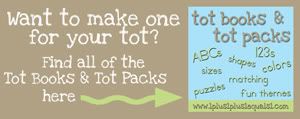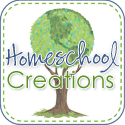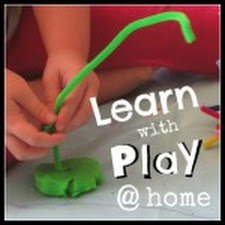There is some research, shared on Reading Rockets, where they concluded that there is no perfect order for letter instruction: "It may be reasonable to begin with a "personally relevant" letter (first letter of the name)." Start with what you know, your child's first name.
Learning to identify letters of the alphabet is a beginning step in teaching phonics and reading. However, before your child is ready to learn phonics she first needs to learn some phonemic awareness. Beginning with your child's first name, and the letters in it, you can introduce your child to not only letter identification but also phonemic awareness, phonics, letter formation (writing), and early reading skills while playing "The Name Game".
There are several levels of phonemic awareness:
- Rhythm and rhyme
- Parts of a word
- Sequence of sounds
- Separation of sounds
- Manipulation of sounds
The Name Game teaches:
- letter versus word (early reading skills)
- capital verses lower case letters (alphabet)
- letter identification (alphabet)
- letter/sound connection (phonics)
- letter formation (writing)
- first letter and last letter (early reading skills)
- counting (math)
- reading left to right (early reading skills)
- syllables (phonemic awareness)
The name game is not accomplished in one sitting. It is a collection of activities that you do with your child over days, weeks, even months. You will do the activities multiple times. Do one or two activities at a time, based on your child's interest and what they are ready to learn. Below is a list of ideas, you may come up with more! Once your child knows all of the letters in her own name you can do the name game activities with other names that are important to your child like brothers and sisters, cousins and friends. Kids like to know how to read and write each other's names.
Write or print your child's name clearly on a piece of card stock. If you are typing and printing it think about how you want the letters (particularly the letters a and g) to look. Comic Sans MS and Chalkboard are good fonts that look like "printing" and do not have a type set a and g. Here's my example:
Letter Identification:
Tell your child, "This is your name. Your name starts with the letter J". Point to the letter J. Jackson begins with the letter "J". "J is for Jackson."
Point to each letter as you say them J-A-C-K-S-O-N, then sweep your finger under the whole word and say, "Jackson".
Do this in other places you see his name as well.
Look for the first letter of his name in other places. Soon he may begin to notice the letter J. "Look!" he may point out on a sign, "I see J is for Jackson!"
Look for and point out his first letter in books.
Continue for the rest of the letters in his name.
Capital versus lower case letters:
Point out that the first letter of his name is a capital or big letter, and the rest of the letters are lower case or little letters.Syllables and phonemic awareness:
Practice clapping your child's name, with one clap for each syllable. "Let's clap your name: Jack/son. Your name has two claps."
Letter versus word; Reading left to right; Counting:
Write or type the name again on card stock but leave double spaces between letters. Show them the name. Tell them that their name is a word and it is made up of letters. Tell them,"I'm going to cut up the word into letters. Lets's say the letters as I cut them."
Cut apart the name while saying the letters one by one.
"Now it is not a word anymore, it is not a name any more, it is just a bunch of letters."
"Let's count the letters from your name" Together count the letters.
"We can put the letters back together in the right order to make your name."
Work together to put the letters in order to make the name, using the first name card as a model.
"What letter comes FIRST in your name?"
"What letter comes NEXT in your name?"
Continue until you get to, "What is the LAST letter in your name?"
You are modeling that the oder of the letters matters in a word. That a word it put together from left to right.
When it is all finished, "Now it is a word again! Let's check it. Is it right?"Say the name slowly while running your finger underneath to check it. Have him check it the same way.
Now you are modeling reading left to right.
Keep this "name puzzle" that you have made in a baggie and he can practice putting his name together. Watch him and make sure he is always starting with the FIRST letter in his name and building from left to right. Correct him if he starts from the end or the middle, or starts building from right to left.
Letter/sound connection:
As you continue to work with his name and as he is getting to know the names of the letters talk about the different letters and the sounds that go with them.
"What sounds do you hear first in Jackson?"
Model the /j/ sound and have him make the /j/ sound.
"What letter makes the /j/ sound?"
"Jackson begins with the letter J."
Find other words that begin with the same letter. You can collect some pictures and glue them on a paper for a J collection.
Find the letter here on Starfall.com.
You can continue and do a letter of the week using each letter in his name. Some good letter downloads at:
Don't miss the great ideas here! The A-Z of Learning Letters
Letter formation:
Model writing your child's name. See if they can tell you which letter to write FIRST, NEXT, and LAST.
Model correct letter formation. Correct letter formation is really important. It is much easier to teach correct letter formation in the beginning than to un-learn incorrect letter formation and re-teach correct formation.
I like the way they teach letter in the Handwriting Without Tears curriculum. Download the letter formation charts from HWT and learn the correct letter formation for yourself (you may be forming some letters "wrong"). http://www.hwtears.com/hwt/parents/parent-extras
One thing to know is that HWT only introduces capital letters in their Pre-K material, so you will need to get K material to cover both capital and lower case letters. While my goal is to avoid workbooks as much as possible and provide more hands on learning, if you are going to use a workbook for hand writing and/or letter formation the HWT materials is what I would recommend.
If you have access to a chalkboard this is an excellent method. (Even if you don't, watch the video to see some good modeling of letter writing.) Watch the video on the HWT website that shows how to teach your child to write their name using the "wet-dry-try" method: Video Lessons: Writing Name Using Wet-Dry-Try
More:
Help your child build their name using magnetic letters, or other letter manipulatives.
Form the letters of their name out of play dough.
Practice writing in a variety of mediums:
You can continue with similar activities with the names of friends and family, even pets! It is a great way to introduce sound/letter correspondence, letter formation and letter identification in a way that is meaningful to your child. It is much form meaningful to know that M is for Mommy than M is for Monkey.









Wow! You did a great job of breaking down the steps! I wish I had this when my son (age 14) was younger, he has dyslexia. Though my youngest daughter (Age 4) definitely is taking a unique approach to learning the alphabet and it mostly seems to involve learning letters that are personally significant to her (as you mention). It also involves rejecting any method/approach I am try. So I am backing off for the time being...
ReplyDelete